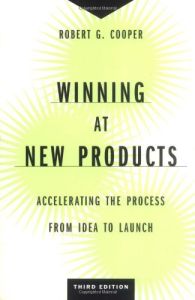Join getAbstract to access the summary!

Join getAbstract to access the summary!
Robert K. Cooper
Winning at New Products
Accelerating the Process from Idea to Launch
Perseus Books, 2001
What's inside?
A few careful strategies can boost your chances of launching a new product that stays on the shelf.
Recommendation
New products accelerate consumerism and a truly innovative launch can re-ignite corporate balance sheets, but new product attrition is high. For every seven new product ideas floated, about four enter development, one and a half are launched and only one succeeds (25% to 45% of new products flop). Yet intrepid corporations innovate and live to recount their tales to happy shareholders. The book presents every conceivable detail of the launch process - evaluation, management, best practices, game plans and even the seemingly impossible, incorporating new ideas into corporate thinking. So, what are the shortcomings? Well, there’s not enough service industry info and there is too much redundancy. Processes are listed, sub-processes are listed and sub-sub-processes, until the reader gets lost in lists and stages. Still, if you retain the energy to try, this book provides the theoretical and operational framework for launching new products. All you need is that billion dollar idea. getAbstract.com recommends this book to idea people in marketing, technology, R & D and sales.
Summary
About the Author
Robert G. Cooper is a professor of marketing at the Michael G. DeGroote School of Business, McMaster University in Canada and ISBM Distinguished Research Fellow at Pennsylvania State University’s Smeal College of Business Administration. He is the creator of the Stage-Gate product development process and is the author of numerous books on new product introductions.

















Comment on this summary